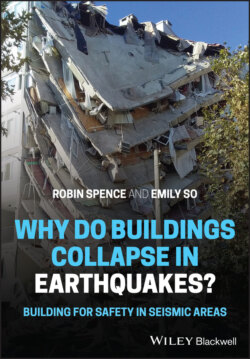Читать книгу Why do buildings collapse in earthquakes? Building for safety in seismic areas - Robin Spence - Страница 21
2.2.5 The 27.5.2006 Yogyakarta Earthquake: Mw6.3, 5778 Deaths
ОглавлениеCentred on the densely inhabited Yogyakarta region in eastern Java, this earthquake occurred at 5.53 a.m. local time, with its epicentre in Bantul district. The area of high ground shaking intensity was greater than 200 km2. More than 156 000 houses and other structures were destroyed, killing 5778 people and seriously injuring more than 40 000. The loss of housing accounted for more than 50% of the total damage, and it has been suggested that the death toll could have been much larger had the earthquake not occurred at a time when many were awake and involved in household tasks outside their houses. Nearly all the deaths and serious injuries which did occur were as a result of the collapse of buildings (So 2009).
The typical house in the affected rural areas (katcha house) is a single‐storey masonry building, with burnt clay brick or concrete block laid in a weak cement or lime mortar (Figure 2.11). The roof is of timber or bamboo trusses and rafters, supporting timber battens and clay tiles. There are no connections between the roof members and the walls. A minority of more recently built houses (since 1990) are built using confined masonry walls, with RC columns and beams, as described in Chapter 5, but with traditional roof structures. A few are of timber frame construction (EERI 2006b).
The lack of adequate ties between roof and walls, and the lack of out‐of‐plane strength of the walls were responsible for the collapse of many of the katcha houses. The buildings built using confined masonry generally performed better, though the earthquake exposed many failures in jointing and reinforcing such structures (EERI 2006b).
As in the 2005 Kashmir earthquake, there were no hospital data available to establish causes of death and injury, but a survey of survivors in 523 families in 4 of the worst affected districts, sampling 2652 individuals, was carried out by our team in conjunction with Yogyakarta's Gaja Mada University (So 2009) to establish patterns and causes of death and injury. This confirmed, as in the companion survey in Kashmir, that the major cause of serious injury and death was structural collapse resulting in entrapment, with no clear difference between different types of construction. However, in this event, a high proportion of the building occupants moved outside at the onset of the earthquake (67% of those in buildings which collapsed), and this may have saved many lives.
Figure 2.11 Collapse of house of traditional construction, Yogyakarta earthquake.
Source: Boen (2016). Reproduced with permission.
